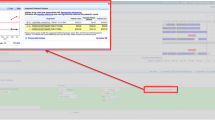Abstract
A Major barrier to the management of hypertension is the extent to which patients comply with the treatment regimen. Herein we report the findings of a retrospective analysis designed to discern the relationship between antihypertensive formulation, regimen compliance and the utilization of health care services. Data for this analysis were derived from the state of South Carolina's Medicaid computer archive. The study population consisted of 1 000 randomly selected beneficiaries initially prescribed one of the following antihypertensive regimens as monotheraphy: atenolol (daily); captopril (twice daily); oral clonidine (twice daily); transdermal clonidine (once a week); diltiazem (twice daily); enalapril (twice daily); metoprolol (twice daily); prazosin (twice daily); terazosin (daily); and verapamil-SR (daily). Multivariate regression analysis was used to determine the incremental influence of selected demographic characteristics, utilization of medical services prior to diagnosis for hypertension, initial antihypertensive medication, medication possession ratio for antihypertensive therapy, and the number of maintenance medications for disease state processes other than hypertension on post-period health care expenditure. Results indicate that patients initially prescribed antihypertensive medication requiring daily or weekly administration experience infrequent changes in their therapeutic regimen, far less use of concomitant therapy for blood pressure control, an increased utilization of antihypertensive medication, and a decrease in the use and cost of physician, hospital and laboratory services.
Similar content being viewed by others
References
The 1988 Joint National Committee. Report of the Joint National Committee on Detection, Evaluation, and Treatment of High Blood Pressure.Arch Intern Med 1988;148: 1023–1038.
Amery A, Birkenhager W, Brixko P,et al. Mortality and morbidity results from the European Working Party on high blood pressure in the elderly trial.Lancet 1985;i: 1349–1354.
Cruickshank JM, Thorp JM, Zacharias FJ. Benefit and potential harm of lowering high blood pressure.Lancet 1987;i: 581–584.
Kannel WB, Dawber TR, McGee DL. Perspective on systolic hypertension: the Framingham study.Circulation 1980;61: 1179–1182.
Working group on renovascular hypertension. National High Blood Pressure Education Program. Detection, Evaluation, and Treatment of Hypertension: Final report.Arch Intern Med 1987;147: 820–829.
Nonpharmacological approaches to the control of high blood pressure. Final report of the subcommittee on nonpharmacological therapy of the Joint National Committee on Detection, Evaluation, and Treatment of High Blood Pressure.Hypertension 1986;8: 444–467.
Tuck ML. Clinical care of the aging hypertensive patient.J Cardiovasc Pharmacol 1988;12(S8: S40-S48.
Staessen J, Fagard R, VanHoof R, Amery A. Antihypertensive drug treatment in elderly hypertensive subjects: evidence of protection.J Cardiovasc Pharmacol 1988;12(S8: S33-S38.
Medical Research Council Working Party. MRC trial of treatment of mild hypertension. Principal results.Br Med J 1985;291: 97–104.
Weber MA. Transdermal antihypertensive therapy: clinical and metabolic considerations.Am Heart J 1986;112: 906–912.
Lowenthal DT, Saris S, Paran E,et al. Efficacy of clonidine, a transdermal therapeutic system. The international clinical trial experience.Am Heart J 1986;112: 893–900.
Langley MS, Heel RC. Transdermal clonidine. A preliminary review of its pharmacodynamic properties and therapeutic efficacy.Drugs 1988;35: 123–142.
Hollifield J. Clinical acceptability of transdermal clonidine: a large-scale evaluation by practitioners.Am Heart J 1986;112: 900–905.
Weber MA, Dryer JIM. Clinical experience with rate-controlled delivery of antihypertensive therapy by a transdermal system.Am Heart J 1984;108: 231–236.
Burris JF, Papademetriou V, Wallin JD, Cook ME, Weidler DJ. Therapeutic adherence in the elderly: transdermal clonidine compared to oral verapamil for hypertension.Am J Med 1991;91(S1A: 22S-28S.
Lueg MC, Herron J, Zellner S. Transdermal clonidine as an adjunct to sustained-release diltiazem in the treatment of mild to moderate hypertension.Clin Ther 1991;13: 471–481.
Elsen SA, Miller DK, Woodward RS,et al. The effect of prescribed daily dose frequency on patient medication compliance.Arch Intern Med 1990;150: 1881–1884.
Psaty B, Koepsell T, Wagner E,et al. The relative risk of incident coronary heart disease associated with recently stopping the use of beta-blockers.JAMA 1990;263: 1653–1657.
Col M, Fanale JE, Kronholm P. The role of medication noncompliance and adverse drug reactions in hospitalizations of the elderly.Arch Intern Med 1990;150: 841–845.
Sclar DA, Skaer TL, Chin A, Okamoto MP, Gill MA. Utility of a transdermal delivery system for antihypersensitive therapy. Part I.Am J Med 1991;91(S1A: 50S-56S.
Sclar DA, Skaer TL, Chin A, Okamoto MP, Gill MA. Utility of a transdermal delivery system for antihypertensive therapy. Part II.Am J Med 1991;91(S1A: 57S-60S.
Sclar DA, Skaer TL, Chin A, Okamoto MP, Nakahiro RK, Gill MA. Effect of health education on the utilization of HMO services: a prospective trial among patients with hypertension.Prim Cardiol 1992;18(S1: 30–35.
Pharmaceutical benefits under state medical assistance programs. Reston, VA: National Pharmaceutical Council. 1990.
Rudd P, Ahmed S, Zachary V,et al. Improved compliance measures: applications in an ambulatory hypertensive drug trial.Clin Pharmacol Ther 1990;48: 676–685.
Cramer JA, Scheyer RD, Mattson RH. Compliance declines between clinic visits.Arch Intern Med 1990;150: 1509–1510.
Author information
Authors and Affiliations
Rights and permissions
About this article
Cite this article
Sclar, D.A., Skaer, T.L., Robison, L.M. et al. Effect of antihypertensive formulation on health service expenditures. Clinical Autonomic Research 3, 363–368 (1993). https://doi.org/10.1007/BF01829454
Issue Date:
DOI: https://doi.org/10.1007/BF01829454




